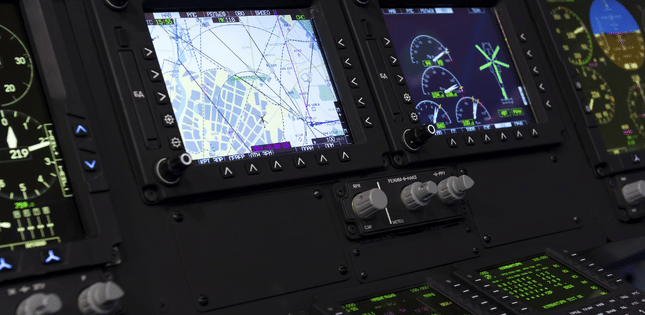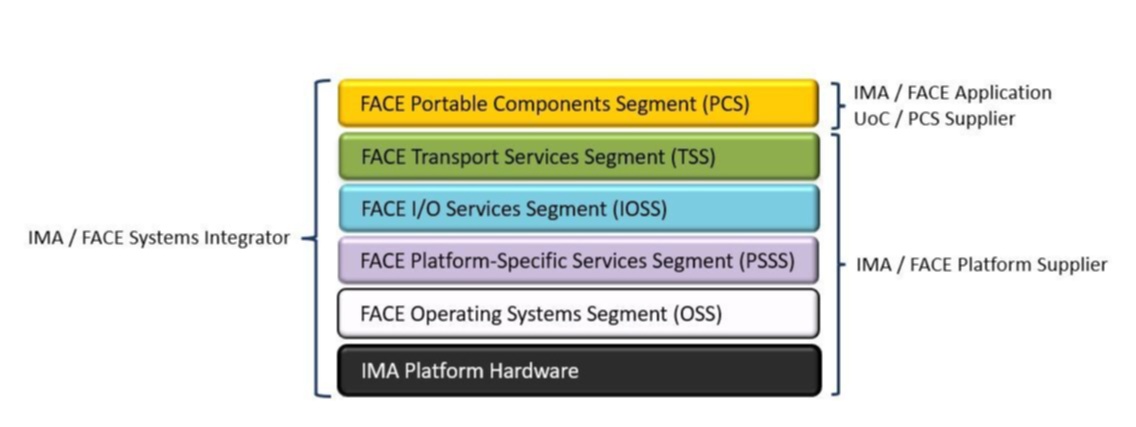3 min read
Leveraging Commercial Avionics Standards to Refine and Accelerate FACE Deployments
 Chip Downing
:
July 12, 2022
Chip Downing
:
July 12, 2022

Part 2 of the RTI Military Avionics Blog Series
In my previous blog, I discussed the power and efficiency of the ARINC 653 standard and the business model surrounding ARINC 653 systems defined in the RTCA DO-297 standard, which is called “Integrated Modular Avionics (IMA) Development Guidance and Certification Considerations,” that defines three supplier roles that contribute hardware and software on a shared ARINC 653 compute platform. As a refresher, the three DO-297 supplier roles are:
- IMA Platform Supplier: Prepares the hardware compute environment, OS/RTOS, board support package (BSP), aircraft platform capabilities and the communication infrastructure for applications, as well as all related safety and security certification evidence.
- Multiple IMA Application Suppliers: Provide hosted functions, with appropriate certification evidence, which execute protected ARINC 653 partitions.
- IMA System Integrator: Ties together this IMA environment on a given airframe platform and achieves aircraft platform airworthiness.

Figure 1. RTCA DO-297 Supplier Roles
Future Airborne Capability Environment (FACE™)
Over the past 12 years, industry, government and academia worked with The Open Group to create a technical standard and business approach designed to reduce cost and risk, while increasing capabilities and compressing time-to-deployment in military avionics systems. This organization spawned the Open Group FACE™ Consortium, and with the joint efforts of over 100 companies and 2,000 individuals, the FACE Technical Standard and Business Approach was developed, openly published, and refined.
The FACE Technical Standard is a standard-of-standards, referencing over 60 open standards, and is based upon a layered software architecture designed for rapidly replacing any software component as required. These layers, or FACE segments, consist of a software component or domain-specific data model designed to meet the applicable requirements defined in the FACE Technical Standard for a defined FACE Architectural Segment. These software modules are referred to as FACE Units of Conformance (UoC).
There is a halo effect of the FACE Consortium adoption of commercial standards – it’s the assimilation of proven business and supplier processes that surround these standards, even though they are not specifically mentioned in any of the FACE business processes or Technical Standards. Adding DO-297 allows FACE suppliers to immediately manage the extremely high complexity and cost of merging and integrating mixed safety-level software components on a FACE flight-critical military avionics platform.
These supplier roles and responsibilities provide a business structure for developing parts of the system separately, and then integrating them together into a functioning system with a combined set of certification artifacts. DO-297 provides clear guidance and separation of all IMA suppliers and subcontractors, allowing them to focus solely on delivering their aspect of the system, including the relevant certification artifacts, with minimal cost and risk.
We can map DO-297 supplier roles directly into the FACE supply chain, with three similar roles:
- FACE Platform Supplier: Prepares the hardware compute environment, OS/RTOS, board support package (BSP), aircraft platform capabilities, the communication and data infrastructure for applications, and all related safety and security certification evidence.
- Multiple FACE UoC / Application Suppliers: Supply hosted functions, with appropriate certification evidence, which execute protected ARINC 653 partitions.
- FACE System Integrator: Ties together this IMA environment on a given airframe platform and achieves aircraft platform airworthiness.

Figure 2. RTCA DO-297 IMA / FACE Supplier Avionics Supply Chain
Applying these DO-297 roles and responsibilities to FACE avionics programs provides a well-defined framework for developing, delivering, certifying, and maintaining FACE avionics stacks. It enables FACE software suppliers to independently work on their specific deliverable without being exposed to unexpected responsibilities, costs, and risks. Most importantly, making the smart decision to use proven, open, commercial standards as the foundation of the FACE Technical Standard and business approach streamlines the creation of world-beating military avionics capabilities that enable warfighters to maintain a consistent advantage over global peer adversaries.
Conclusion
Adopting these open technical standards enables the immediate use of commercial solutions and standards such as DO-297 – created and funded by global commercial avionics programs – into the development of military avionics solutions.
This adoption has two immensely powerful benefits. First, it expands the market for commercial solutions, creating the opportunity for greater investment and innovation. Second, this adoption also benefits military programs by enabling solutions to be developed and deployed at a faster pace with lower cost and higher quality.
Stay tuned for Part 3 of this series, which will focus on the RTCA DO-178C standard, as well as the FACE Reference Architecture and its five key segments. For more information, visit rti.com to learn more about proven RTI products and services for the Aerospace & Defense industry.
About the author
 Chip Downing is Senior Market Development Director, Aerospace & Defense, Real-Time Innovations, Inc.
Chip Downing is Senior Market Development Director, Aerospace & Defense, Real-Time Innovations, Inc.
Chair, FACE Business Working Group Outreach Subcommittee
Posts by Tag
- Developers/Engineer (177)
- Connext DDS Suite (77)
- Technology (74)
- News & Events (73)
- 2020 (54)
- Standards & Consortia (51)
- Aerospace & Defense (48)
- Automotive (35)
- 2023 (34)
- 2022 (29)
- IIoT (27)
- Leadership (24)
- 2024 (22)
- Cybersecurity (20)
- Healthcare (20)
- 2021 (19)
- Connectivity Technology (16)
- Military Avionics (15)
- Culture & Careers (14)
- FACE (13)
- Connext DDS Pro (10)
- JADC2 (10)
- ROS 2 (10)
- 2025 (8)
- Connext DDS Tools (7)
- Connext DDS Micro (6)
- Databus (6)
- Transportation (5)
- Case + Code (4)
- Connext DDS (4)
- Connext DDS Cert (4)
- Energy Systems (4)
- FACE Technical Standard (4)
- Oil & Gas (3)
- RTI Labs (3)
- Research (3)
- Robotics (3)
- #A&D (2)
- Connext Conference (2)
- Edge Computing (2)
- MDO (2)
- MS&T (2)
- TSN (2)
- ABMS (1)
- C4ISR (1)
- ISO 26262 (1)
- L3Harris (1)
- LabView (1)
- MathWorks (1)
- National Instruments (1)
- Simulation (1)
- Tech Talks (1)
- UAM (1)
- Videos (1)
- eVTOL (1)
 Success-Plan Services
Success-Plan Services